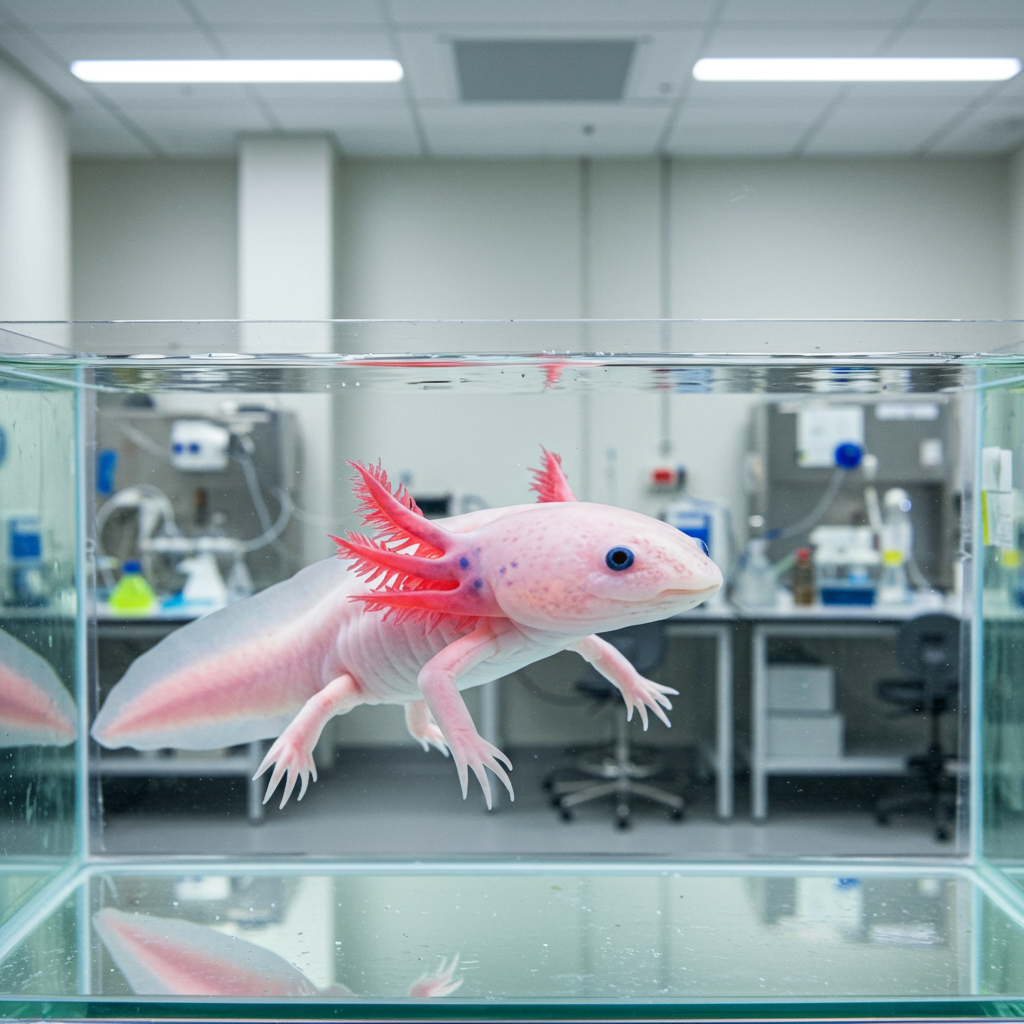Axolotls, the charming aquatic salamanders with their feathery gills and perpetual “smile,” possess one of biology’s most astounding superpowers: the ability to perfectly regenerate lost limbs, tails, hearts, and even parts of their brains. For decades, scientists have been fascinated by this remarkable feat, searching for the fundamental mechanisms that grant these creatures such extraordinary regenerative capabilities.
Now, a groundbreaking study published in Nature Communications has uncovered a significant clue in this biological mystery, potentially paving the way for future advancements in human healing and regenerative medicine.
Unlocking the Axolotl’s Regeneration Secrets
The central question in understanding regeneration has long been: What signals tell injured cells exactly what to regrow – be it just a foot or an entire arm? Researchers from Northeastern University, led by senior study author James Monaghan, honed in on a substance commonly known for its use in skincare: retinoic acid.
Their findings revealed that retinoic acid acts as a crucial signaling molecule, directing cells at the injury site on what body parts to regenerate and how the process should unfold. This molecule is also vital during human embryonic development, guiding cells to form heads, limbs, and other body structures. However, for reasons scientists are still investigating, most human cells lose their sensitivity to retinoic acid’s regenerative cues after birth.
The Role of Retinoic Acid and a Crucial Enzyme
To observe retinoic acid signaling in action, Monaghan’s team utilized genetically modified axolotls engineered to glow fluorescent green in the presence of activated retinoic acid in injured cells.
Early experiments involved a somewhat “Frankenstein” approach, injecting high doses of retinoic acid. This resulted in overgrowth at amputation sites – for example, an entire arm might regenerate instead of just a hand. This showed that too much retinoic acid could override the natural “blueprint.”
This led researchers to investigate how axolotls naturally control retinoic acid levels. They discovered a single enzyme, CYP26B1, responsible for breaking down this molecule in the axolotl’s body. When they blocked this enzyme, the same excessive regeneration occurred. This confirmed a critical insight: the precise, natural levels of retinoic acid are meticulously controlled by its breakdown, ensuring the correct structure regenerates.
In essence, the enzyme CYP26B1 acts as a critical regulator, preventing the regeneration process from going too far and ensuring a hand regrows as a hand, not an arm. Understanding this delicate balance is a key piece of the complex regenerative puzzle.
Why Humans Scar, While Axolotls Regenerate
A major difference between human and axolotl responses to injury lies in how their cells behave.
Axolotls: When injured, their cells undergo dedifferentiation. They revert to a more embryonic state, essentially “forgetting” their previous function (like being a skin or bone cell). In this state, they become highly responsive to signals like retinoic acid, focusing on rebuilding the missing structure.
Humans: Injured human cells typically respond by forming scar tissue. Fibroblasts lay down collagen, essentially patching the wound rather than reconstructing the original tissue or limb. Our cells do not dedifferentiate and cannot respond to the same regenerative cues as axolotl cells.
Implications for Future Human Medicine
While regrowing entire human limbs remains a distant prospect, studying the molecular signals in axolotls holds immense potential for future medical applications. Understanding how retinoic acid directs regeneration in amphibians could lead to:
New Healing Methods: Developing treatments to prevent scar formation and promote more effective tissue repair in humans.
Targeted Gene Therapies: Instead of adding or removing genes, insights from axolotls might show how to “turn on” dormant regenerative pathways or “turn off” scar-promoting ones in human cells using technologies like CRISPR.
- Accelerated Repair: Research into how axolotls quickly regrow structures could inform methods to speed up healing processes in humans, which currently take much longer for complex tissues.
- www.yahoo.com
- krdo.com
As scientists continue to unravel the full “blueprint” that retinoic acid targets within axolotl cells, they move closer to potentially restoring some level of regenerative ability to human tissues, offering hope for treating injuries, diseases, and preventing debilitating scarring. This fundamental biological research is crucial for unlocking capabilities currently considered science fiction.




